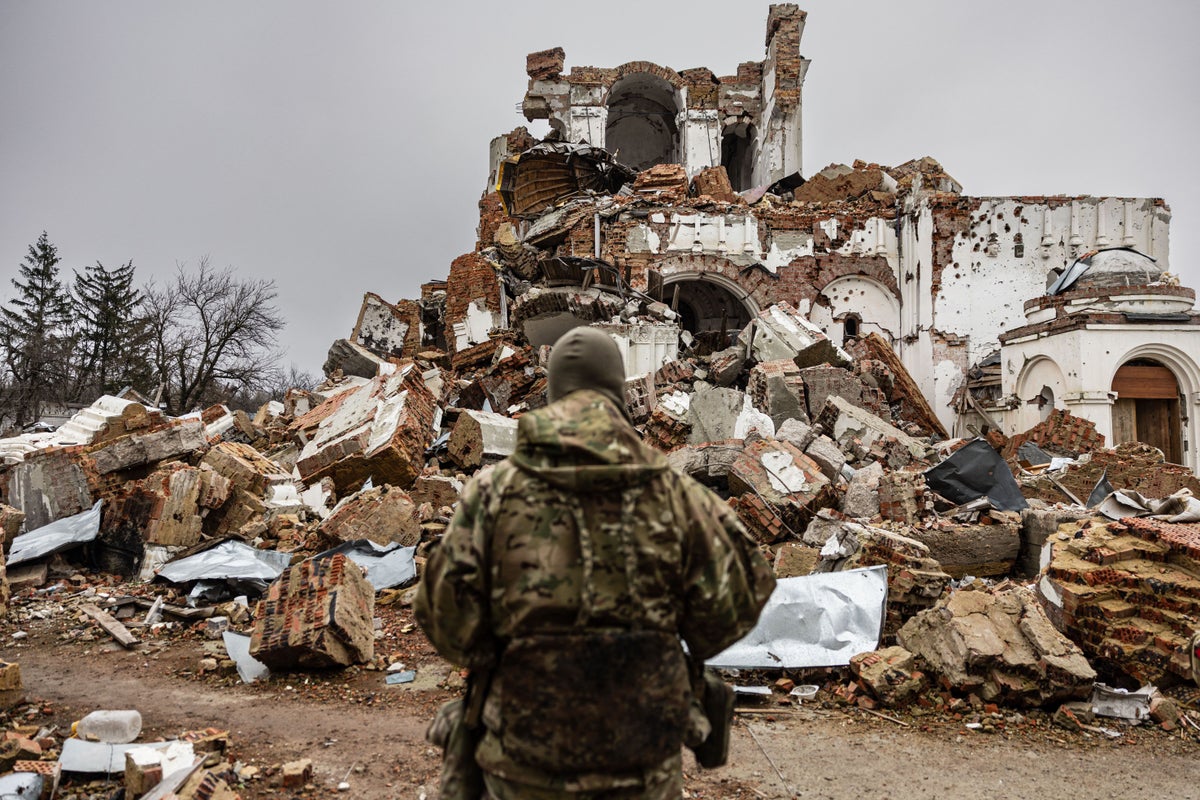
Anti-Kremlin militia are said to have launched a cross-border raid from Ukrainian territory – overrunning one Russian village and pushing on into others.
Ukrainian military intelligence, the GUR, claimed that two self-described Russian partisan groups, the Liberty of Russia Legion and the Russian Volunteer Corps (RVC) – both consisting of Russian citizens – carried out the attack. It is one of the largest such incursions since Russia invaded Ukraine.
A spokesperson for the GUR told Ukraine’s public broadcaster, Suspilne, that the two groups were conducting an operation in the Belgorod region to create a “security strip” to protect Ukrainian civilians. The incursion was being carried out exclusively by Russian citizens, the spokesperson added.
The Liberty of Russia Legion – a Ukraine-based Russian militia that says it is working inside Russia for Vladimir Putin's overthrow – said it had “completely liberated” the border town of Kozinka. It said forward units had reached the district centre of Graivoron, further east. “Moving on. Russia will be free!”
The RVC claimed in a Telegram post it had crossed the border into Russia again, after claiming to have breached the border in early March. It describes itself as “a volunteer formation fighting on Ukraine’s side” and is reportedly run by a Russian nationalist.
The governor of Russia’s Belgorod region said a Ukrainian “sabotage group” had entered the town of Graivoron, about three miles (five kilometres) from the border. The town also came under Ukrainian artillery fire, he said. The governor, Vyacheslav Gladkov, claimed eight people were wounded and most residents has left the area but the situation remained “tense”.
The Kremlin’s spokesperson, Dmitry Peskov, said President Putin had been informed about the incursion. An effort to “push them out from the Russian territory and liquidate them” was under way, he said.
A senior aide to Ukrainian president Volodymyr Zelensky said Kyiv had nothing to do with the incursion, putting it down to Russia’s emerging “violent resistance movement”. Mykhailo Podolyak claimed that “Ukraine had nothing to do with it” and that “underground guerrilla groups are composed of Russian citizens”.
In a separate, long statement to Reuters, he said: “The violent Russian resistance movement, whose architects are exclusively citizens of Russia itself, is gradually coming out of the underground. They are independent in their decisions, have certain experience, and are free from fear.”
The border attack comes as Moscow and Kyiv continue to trade claims over the fate of the eastern city of Bakhmut – the scene of some of the bloodiest fighting during Moscow’s invasion. Russia claimed over the weekend that city was captured after months of battle but Kyiv has said it is still fighting. The Kremlin spokesperson, Mr Peskov, claimed the border incursion was an attempt by Ukraine to divert attention from Bakhmut.
Ukraine’s deputy defence minister, Hanna Maliar, said Kyiv’s forces still held a foothold inside the city, although such a presence is likely to be small. She said that Ukraine’s advance on the Russian forces’ flanks around Bakhmut is more meaningful than its withdrawal inside the city itself, and Russia will have to weaken its lines elsewhere to send reinforcements to hold the shattered city.
“Through our movement on the flanks – to the north and south – we manage to destroy the enemy,” Ms Maliar said on Monday in televised comments. “By moving along the flanks and occupying certain heights there, our armed forces have made it very difficult for the enemy to stay in the city itself.”
Ukrainian forces were still advancing, particularly south of Bakhmut, Ms Maliar said, though she said fighting on the northern flank had become less intense for now. The situation in either location could not be independently verified.
“Wagner Group mercenaries likely secured the western administrative borders of Bakhmut City while Ukrainian forces are continuing to prioritise counterattacks on Bakhmut’s outskirts,” the Institute for the Study of War think tank – which monitors the conflict – said on Monday.
Earlier on Monday, Ukraine’s Zaporizhzhia nuclear power plant, Europe’s largest atomic power station, spent hours operating on emergency diesel generators after losing its external power supply for the seventh time since Russia’s invasion began, the head of the UN nuclear watchdog said.
“The nuclear safety situation at the plant (is) extremely vulnerable,” Rafael Grossi, head of the International Atomic Energy Agency (IAEA), said. Hours later, national energy company Ukrenergo said on Telegram that it had restored the power line that feeds the plant.
“We must agree to protect (the) plant now; this situation cannot continue,” Mr Grossi said, in his latest appeal for the area to be spared from the fighting between Ukrainian and Russian forces. IAEA staff are deployed at the plant, which is occupied by Russian troops.
The plant’s six nuclear reactors, which are protected by a reinforced shelter able to withstand an errant shell or rocket, have been shut down. But a disruption in the electrical supply could affect cooling systems that are essential for the reactors’ safety even if they are turned off.
Elsewhere, Ukraine’s presidential office said on Monday morning that at least three Ukrainian civilians were killed and 16 others were injured in Russian assaults over the previous 24 hours. The Ukrainian Air Force reported that four out of 16 Russian missiles and all 20 drones launched against Ukrainian targets were shot down.
Reuters and Associated Press contributed to this report







